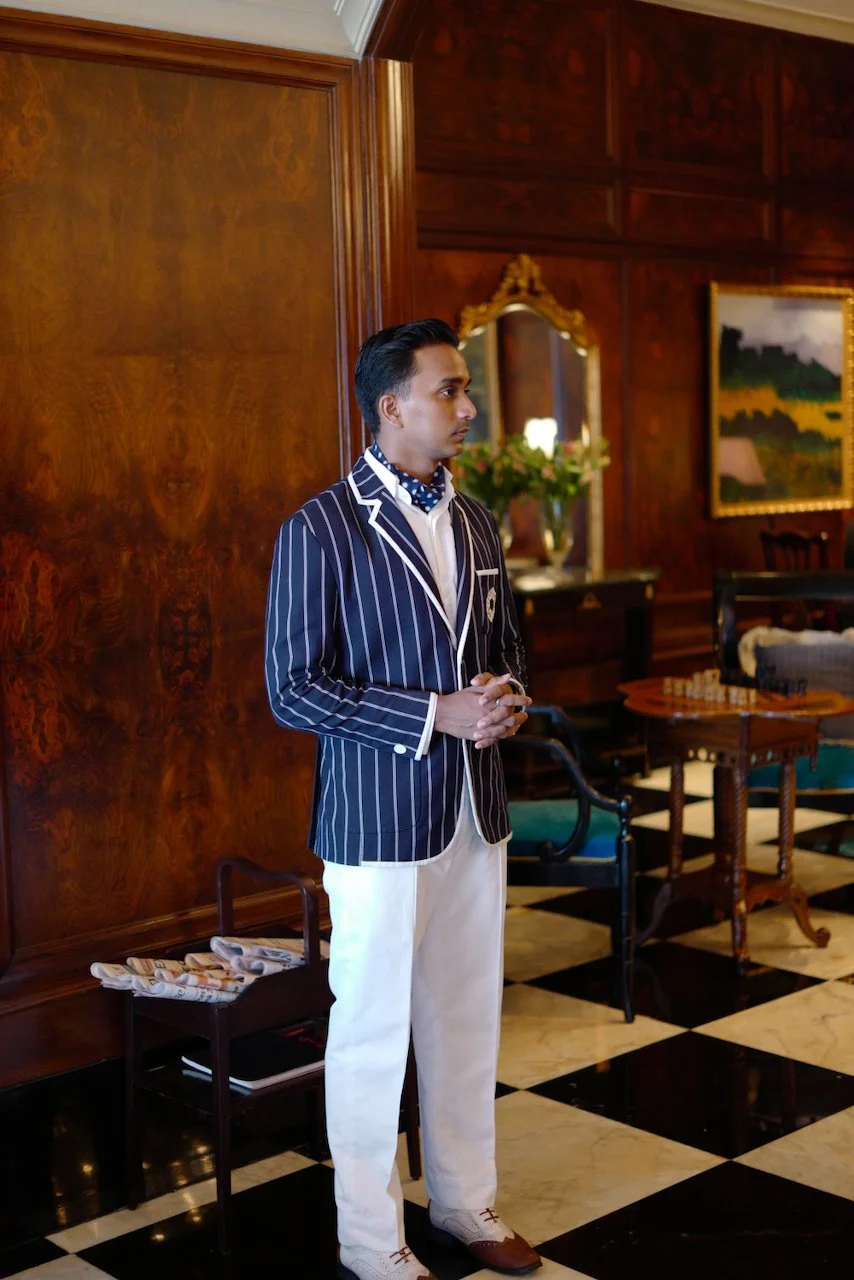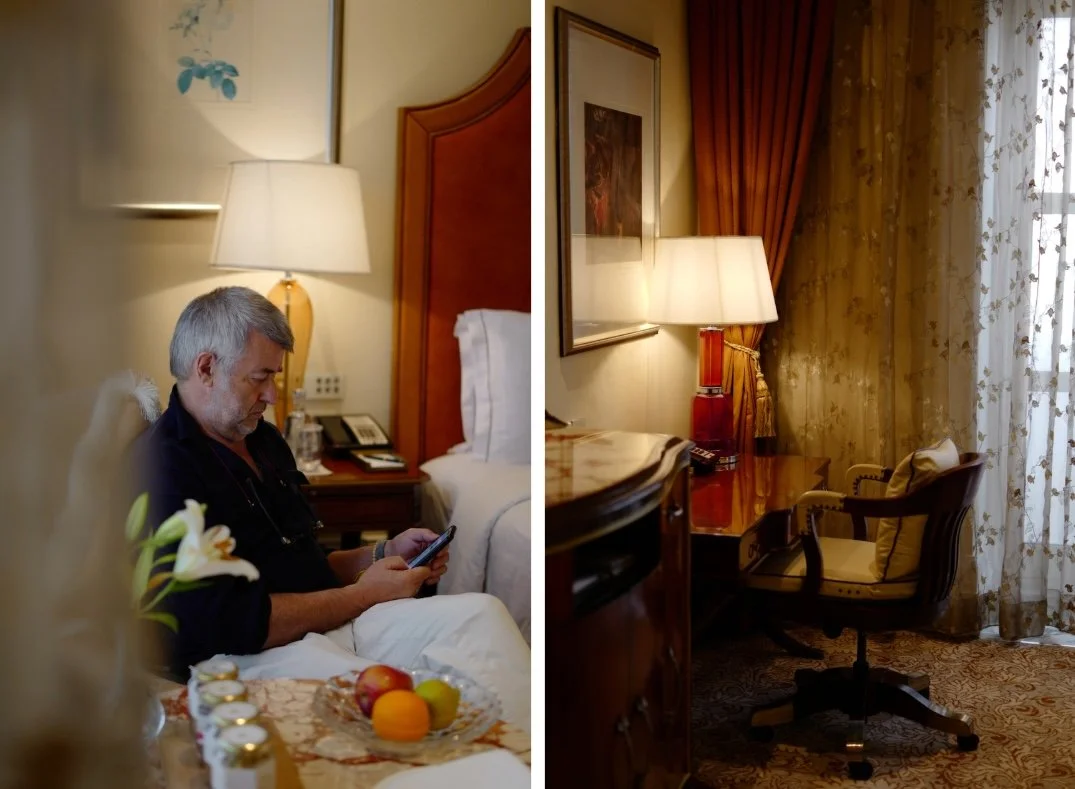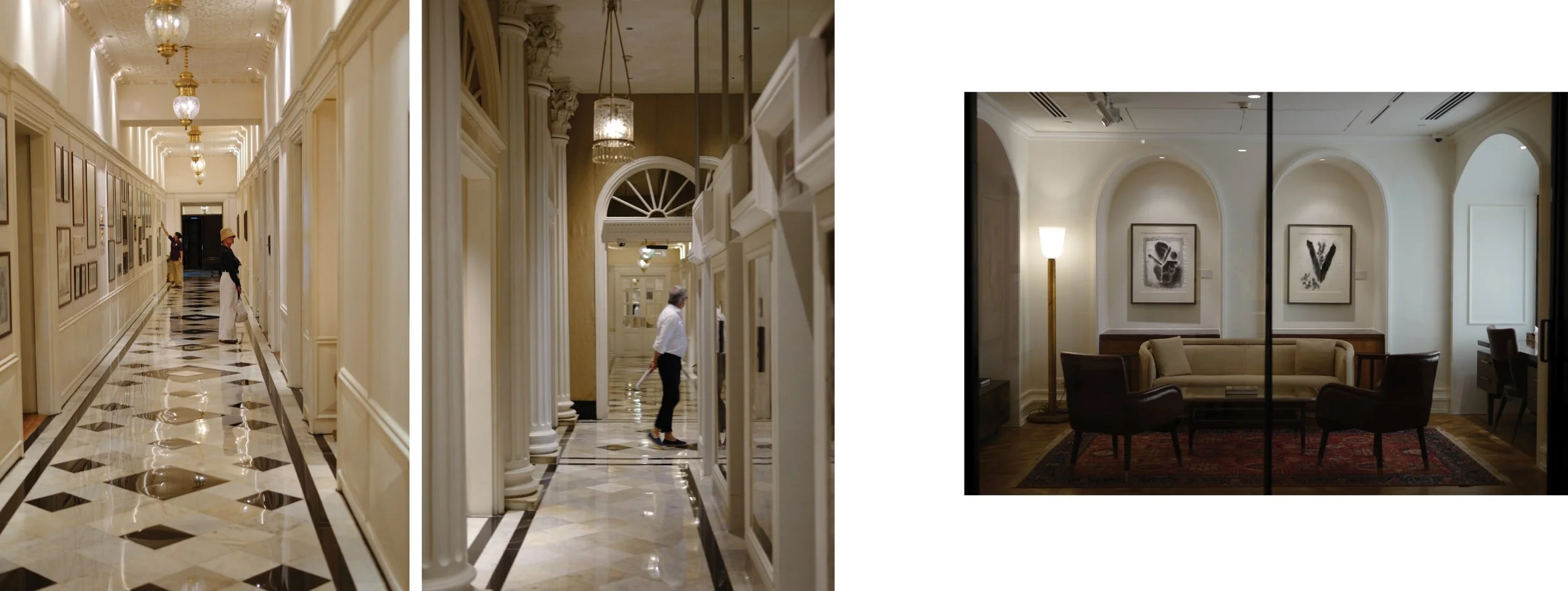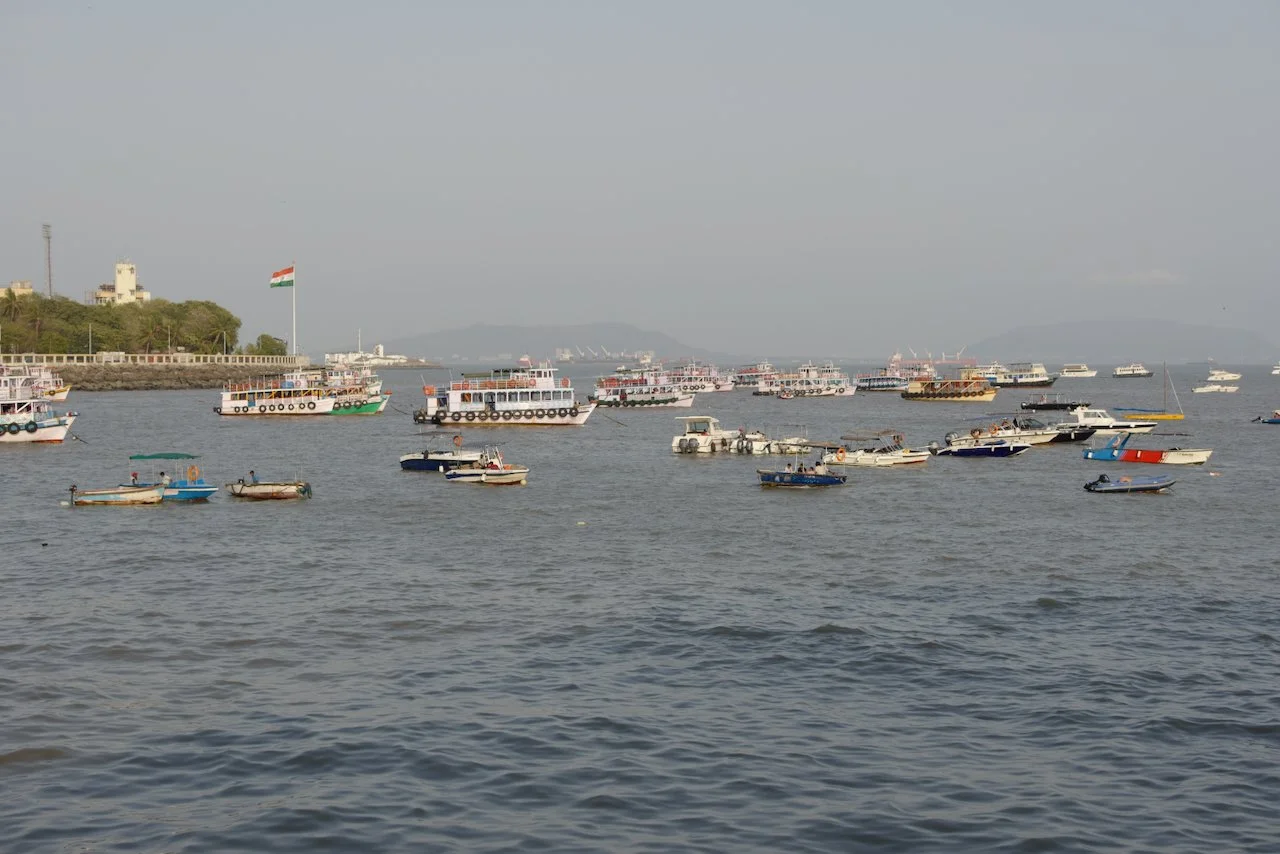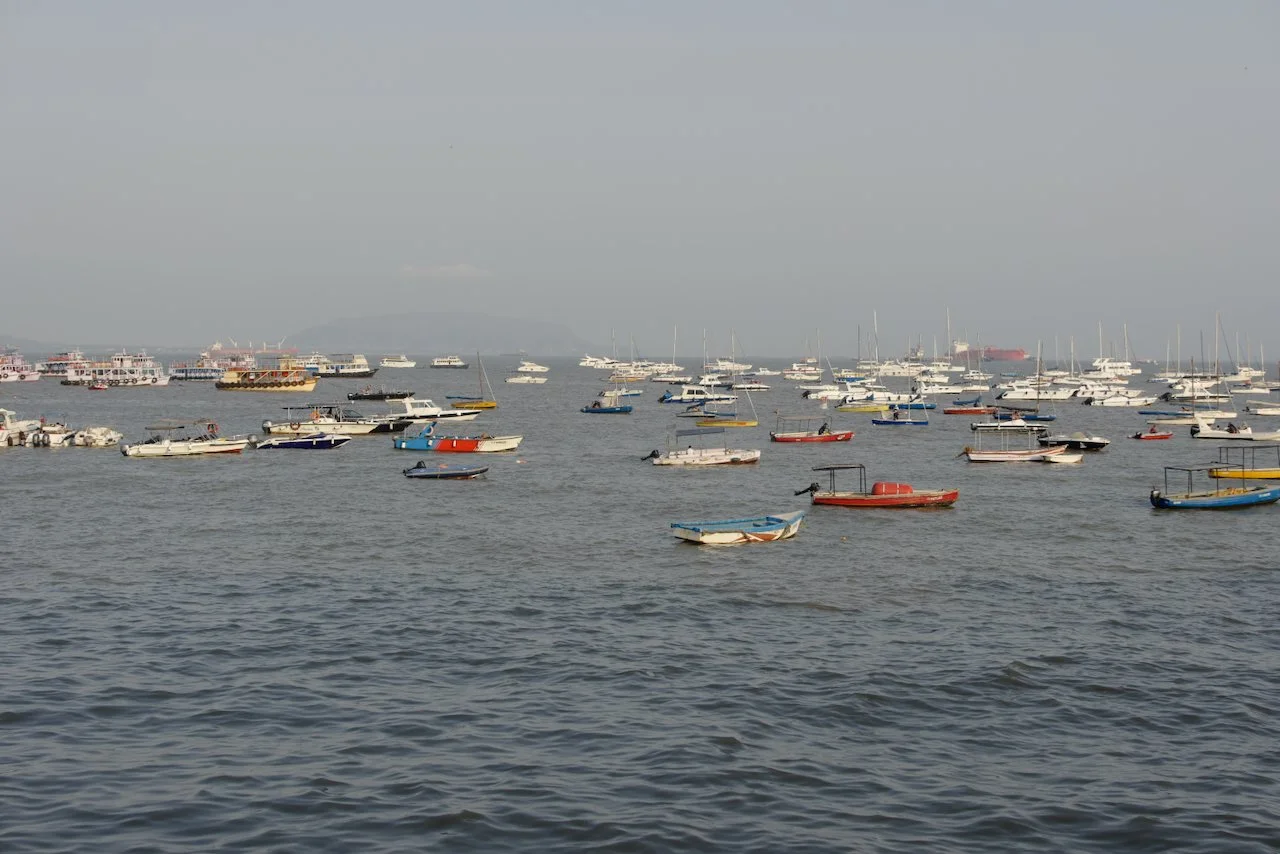Mumbai, 2025
MUMBAI HAS A DIFFERENT TAKE ON TIME
The Taj Palace Hotel—Observations from a City that Refuses Order and a Hotel that Defines It.
Mumbai, in April, arrives all at once.
The air clings to your skin like a reused food wrapper, heavy with sea brine, gasoline, and something metallic you can't quite name. The light is harsh, and the noise unceasing. A fruit vendor shouting, the screech of tires, a bus's diesel engine coughing, cellphones ringing, a fragment of birdsong.
Mumbai is a soundscape that lacks hierarchy.
Everything is in motion; nothing yields. The city surges forward with the confidence of a destination that has been through too much to bother about a visitor's expectations.
Driving into Colaba feels like launching into a novel halfway through. There’s no beginning, no explanation, just immersion. People everywhere; some rushing, some lingering. Paint peels from colonial facades with a distant kind of dignity. Lawyers in tailored, lightweight suits move past potbellied street vendors in faded T-shirts cooking chaat, both unbothered.
The Palace Lounge at the Taj. A space that asks for nothing but your presence.
You remember the Mumbai you left behind in 2013. The version you meet now has multiplied, shimmering with scaffolding and ambition, yet anchored by something older, deeper.
Mumbai moves faster than memory: an ever-churning constellation of construction dust and saffron-hooded taxis. Of incessant hustling and obsolete jobs. Of subsistence and wealth, held together not by plan, but by pulse.
Just like the last time, you’re still unsure whether to love this city or resist it.
And then the volume drops.
Architecture inspired works by M.F. Husain at the Taj Art Gallery. Husain is one of India’s greatest modernist painters.
The taxi draws up to the colonnaded entrance of the Taj Mahal Palace, and the city’s relentless percussion softens to a distant murmur, as though someone dropped the curtain on the roadside theatre behind you. Two statuesque Sikh doorkeepers in ivory tunics, turbans, and embroidered cummerbunds stand flanking the entrance. They do not move quickly, nor do they need to. Quiet authority sets the tone. Their namaste comes with measured grace, neither overbearing nor dramatic, as if to say: welcome to a version of India where time behaves with consideration.
The air inside is cool and scented faintly with polish, citrus, and flowers. Not perfumed, but precise. The marble gleams in discipline. Floors that have borne the footsteps of statesmen, film stars, and diplomats shine with an undeterred kind of pride. Here, no detail calls attention to itself, yet nothing is overlooked.
After the city’s relentless improvisation, the Taj is a carefully composed score—measured, refined, and intentional.
Le Mill - a luxury fashion and design store on the first floor, hidden behind a nondescript store. Mumbai par excellence.
A young man welcomes you into the Palace Lounge with confident grace, a subtle inclination of the head, and a perfectly measured smile. If the lobby holds the city at bay, the lounge leaves it behind entirely. It feels suspended in a thinner kind of time, one measured in servings of tea and softened conversation. The filtered light makes the room feel both spacious and intimate. Chairs are deep. Even the hush seems curated: the audible confidence of money, old habits, and deals brokered with discretion.
Dining among locals at Trishna Restaurant. One of the best fish restaurants in town.
The waitstaff move with a choreography that suggests they've always known which century they belong to. The men wear white trousers with a razor crease and two-tone spectator shoes that you've always admired but never dared to buy. Their navy blazers are piped in white, a polka-dotted day cravat knotted inside a crisp collar. Anywhere else, it might feel theatrical. Here, it feels inevitable. Mumbai—in all its contradictions—has a way of reminding you that elegance still matters.
Sabyasachi - bespoke luxury with exquisite taste at a human scale. One of the most beautiful stores in the world.
You sit down in the kind of stillness you don’t notice until you’re inside it. Outside, the city continues its restless monologue, but here, time gathers in the seasoned upholstery and along the polished wainscoting. This space asks nothing of you except your presence. For a moment, you're not a guest. You're simply here, quietly calibrated to the room’s gentler tempo, relieved that such precision still exists.
The hotel hums with guests accustomed to luxury but untouched by its language. Their clothes don’t reject the setting; they ignore it altogether. They are dressed according to some kind of globalized neutrality that flattens the setting to a collection of clues, a décor. You find yourself wondering when aesthetics stopped requiring response. When beauty became an Instagrammable background. When presence became an option.
Not long ago, you couldn’t enter the Taj Mahal Palace without a jacket. Elegance was a shared language between guest and host. That language seems to have dissolved. The staff still speak it fluently; the walls still remember. But many guests no longer know the words. For those who understand, the experience turns intimate: it's not in what you see, but in how much you feel.
And isn't that precisely the emotion that draws you to this city—time and again?
Subscribe to get full access to the newsletter and publication archives.
